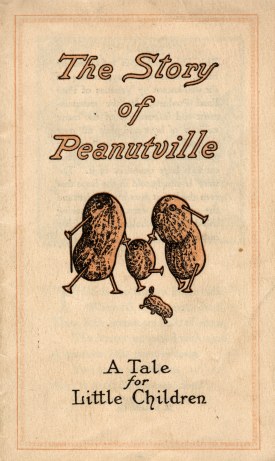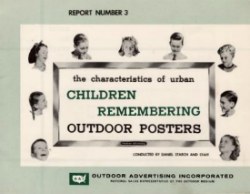Date: May 5-July 25, 2011
Location and Time: Rare Book Room cases during library hours
Contact Information: Jackie Reid, 919-660 5836 or j.reid(at)duke.edu
 Over the last 30 years, the explosion of Saturday morning cartoons and children’s television programming has caused American parents no shortage of worry about their children’s exposure to advertising. As the Hartman Center for Sales, Advertising & Marketing History’s new exhibit, “Look Boys and Girls! Advertising to Children in the 20th Century,” shows, this advertising is anything but a new phenomenon: advertisers started selling directly to kids, rather than their parents, in the early 20th century. Companies like Heinz and Palmolive published children’s stories (like The Story of Peanutville at right) that positively portrayed their products.
Over the last 30 years, the explosion of Saturday morning cartoons and children’s television programming has caused American parents no shortage of worry about their children’s exposure to advertising. As the Hartman Center for Sales, Advertising & Marketing History’s new exhibit, “Look Boys and Girls! Advertising to Children in the 20th Century,” shows, this advertising is anything but a new phenomenon: advertisers started selling directly to kids, rather than their parents, in the early 20th century. Companies like Heinz and Palmolive published children’s stories (like The Story of Peanutville at right) that positively portrayed their products.
Advertising to Children: A Timeline
1910s: Companies like the Winchester Rifle Company established contests to encourage the use of their products.
Late 1920s: Kids could join “clubs” and might receive prizes and higher status if they consumed more of the sponsoring company’s product. Some companies promoted products through sponsored radio shows and even through schools.
1930s: Comic strip advertising was used to target children and played off the popularity of this section of the newspaper.
1953: Two of the first television shows aimed exclusively at preschoolers, “Baby Sitter” and “Ding Dong School,” were broadcast.
 1960s: As interest in young consumers increased, advertisers consulted the latest psychological studies about how best to target children. This segmentation of the market has continued to narrow, with children now broken into two-year age groups like “tweens” or “explorers.”
1960s: As interest in young consumers increased, advertisers consulted the latest psychological studies about how best to target children. This segmentation of the market has continued to narrow, with children now broken into two-year age groups like “tweens” or “explorers.”
1962: McDonald’s ran its first print advertising campaign and used cartoon-like characters to appeal to children.
1979: Well-known children’s advocate, Peggy Charren, testifies before congress, stating that “children’s advertising should be considered, per se, an unfair commercial practice.” Cable station Nickelodeon launches.
Late 1990s: Advertisers continued to expand their reach to these influential customers through the Internet, re-emphasizing “old-fashioned” ways of appealing to children through contests and loyalty clubs.
If you can’t visit the exhibit in person, be sure to check out the online exhibit!
We’d also like to welcome Julian, son of Hartman Center intern Katharine French-Fuller. He made his first visit to the library today (which included a visit to this exhibit)!

